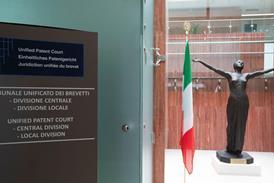Reviewed by: Joanna Goodman
Author: Richard Susskind
Publisher: Oxford University Press
ISBN: 978-0-19-966806-9
Price: £9.99
Liberalisation is revolutionising the legal services landscape and one of the side effects is a rash of predictions from a multitude of sector commentators. But Professor Richard Susskind is different, one might argue – his predictions come true.
Tomorrow’s Lawyers, Susskind’s latest book, has a more optimistic title than The End of Lawyers? (2008), which he has referred to as ‘The End of Lawyers – question mark’. Tomorrow’s Lawyers removes the question mark and sets out a vision for the profession’s future. Unlike The End of Lawyers?, which has a textbook feel, Tomorrow’s Lawyers is a slim volume in a more conversational style. It took less than a day to read.
Susskind has seen his earlier forecasts around the ‘decomposition’ of legal services become reality. Tomorrow’s Lawyers is built on a long series of accurate predictions, and it is upbeat – he believes the profession is being invigorated by change. In order to make Tomorrow’s Lawyers a standalone read, as opposed to the latest in a ‘series’, the first section encapsulates and updates the key themes of The End of Lawyers?: the ‘more for less’ challenge around client expectations; market liberalisation and technology.
Susskind outlines how firms are using technology to realise two key strategies for success – efficiency and collaboration. He analyses the evolution of legal service delivery, notably the ‘decomposition’ of work into different functions that are delivered in different ways, including outsourcing and automation. We are treated to a list of other familiar ‘disruptive’ technologies and issues around dealing with resistance to change.
For those familiar with Susskind’s writing, the second and third sections are more interesting. Part two deals with how lawyers can work differently in the new liberalised landscape. Resistance to change is neatly linked to the succession issues that many firms face. Susskind observes that, these days, junior partners are less confident about the future.
I found the chapter on in-house lawyers particularly engaging as it looks at the relationship between in-house and external counsel from the perspective of one who consults with both. Susskind predicts greater collaboration between in-house legal departments – as is already happening in the public sector – boosting efficiency. Unsurprisingly, he expects post-liberalisation market entrants and online legal services to increase competition. Susskind also considers the skills tomorrow’s lawyers will need. They will need to be more in tune with tomorrow’s clients, of course, he says; but lawyers have always differentiated themselves from other legal services providers by their trusted adviser status.
He highlights new ways of developing lawyer-client connections and synergies, using social media and online platforms. Susskind envisages legal work becoming more IT-driven, with a light hand on the tiller, and applies the same principle to the work of judges and courts, explaining how IT supports access to justice and facilitates dispute resolution. He offers insights into the workings of the judiciary, and the development of courtroom technology and online dispute resolution. Having set out the ‘IT enabled… world into which tomorrow’s lawyers are striding’, part three relates Susskind’s conviction that there will be fewer traditional roles and employers for lawyers, and a host of new ones.
He insists it will still make sense to qualify as a conventional lawyer and, if possible, train in a law firm, though some would question whether this is the best route into many of the new roles he highlights. Does a good legal technologist, for example, need to be a qualified lawyer? Some legal technologists are former lawyers, while others bring added value from different industries. Another Susskind prediction to watch is the re-entry of the global accounting firms into the legal sector.
Susskind’s message to tomorrow’s lawyers is to be flexible – your first job may or may not be in a law firm, or as what we now consider to be a ‘conventional’ lawyer. This leads him to question the direction of legal education and training, which clearly needs to change. Susskind outlines some of the options on offer and devotes an entire chapter to questions that young, aspiring lawyers could consider asking potential employers. He urges them to look at how they can invent their own future and that of the industry.
Tomorrow’s Lawyers is a worthwhile read for anyone involved in legal services and education, particularly if you have not read Susskind’s previous books. If you have, although there is some repetition – albeit updated – Susskind’s in-depth understanding of his subject and ability to explain his views with real clarity has resulted in a thoughtful book which, in only 165 pages, covers many key issues of concern to law firms today. When it comes to keeping up with technology, Susskind is again true to his word. Tomorrow’s Lawyers will be available for Kindle at the end of January.
Joanna Goodman is a former editor of Legal Technology Journal and a Gazette columnist



















![Emily-1[17]](https://d1d8vslyhr7rdg.cloudfront.net/Pictures/274x183/3/1/7/120317_emily117_695594_crop.jpg)








No comments yet